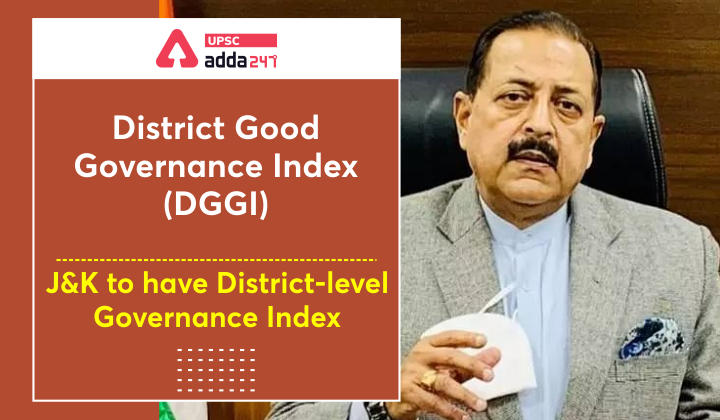Table of Contents
District Good Governance Index (DGGI)- Relevance for UPSC Exam
- GS Paper 2: Governance, Administration and Challenges- Government policies and interventions for development in various sectors and issues arising out of their design and implementation.
District Good Governance Index (DGGI)- Context
- Recently, the Union government said that J&K will have a district-level Governance Index. With this, Jammu & Kashmir will soon become the first Union Territory in the country to have a district-level Good Governance Index.
- District Good Governance Index (DGGI) is modeled on the Good Governance Index 2021 launched on 25 December 2021.
District Good Governance Index
J & K District Good Governance Index (DGGI)- Key Points
- About: With 58 Indicators distributed in 10 sectors, District Good Governance Index (DGGI) of J&K is one of unique exercise in assessing the status of Governance in the Districts of J&K.
- The framework of the proposed Index has been finalized with technical support from the Centre for Good Governance (CGG) Hyderabad.
- Implementation: Department of Administrative Reforms and Public Grievances (DARPG) will carry out the task of preparing the J & K District Good Governance Index, in collaboration with the UT Government of J & K.
- While there will be a comprehensive rank of Districts based on a composite of 10 Sectors, the DGGI will also offer a window on the indicator-wise performance of the Districts.
- DGGI Framework for J & K: DGGI has 58 Indicators drawn from different aspects of development and district administration distributed in all-encompassing 10 sectors such as-
- Agriculture & allied sector,
- Commerce & Industry,
- Human Resource Development,
- Public Health,
- Public Infrastructure & Utilities,
- Economic Governance,
- Welfare & Development,
- Public Safety & Judiciary and
- Citizen-Centric Governance.
- Significance: DGGI will enable districts of J & K to rise to the level of some of the best-administered districts of the country with time-bound disposal of office files and other matters, increased transparency, increased accountability and increased citizen participation.
- The next step would be to carry forward these Good Governance practices down to Tehsil and Block level.
Draft National Air Sports Policy | NASP 2022
District Good Governance Index (DGGI)- Key Points
- Background: District Good Governance Index (DGGI) was announced at the Regional Conference organized by the Department of Administrative Reforms & Public Grievances (DARPG) at Lucknow, Utter Pradesh.
- About: District Good Governance Index for UP (first state) will be developed on the lines of the National Good Governance Index for improving the efficiency of Governance across Districts.
- Developing Authority: District Good Governance Index will be developed by the Department of Administrative Reforms & Public Grievances (DARPG) to collaborate with the Uttar Pradesh government.
- Significance: Good Governance Index for the State can be replicated in other States to reach out to the last man in the last queue with all the benefits of the welfare schemes.
District Good Governance Index




 TSPSC Group 1 Question Paper 2024, Downl...
TSPSC Group 1 Question Paper 2024, Downl...
 TSPSC Group 1 Answer key 2024 Out, Downl...
TSPSC Group 1 Answer key 2024 Out, Downl...
 UPSC Prelims 2024 Question Paper, Downlo...
UPSC Prelims 2024 Question Paper, Downlo...
